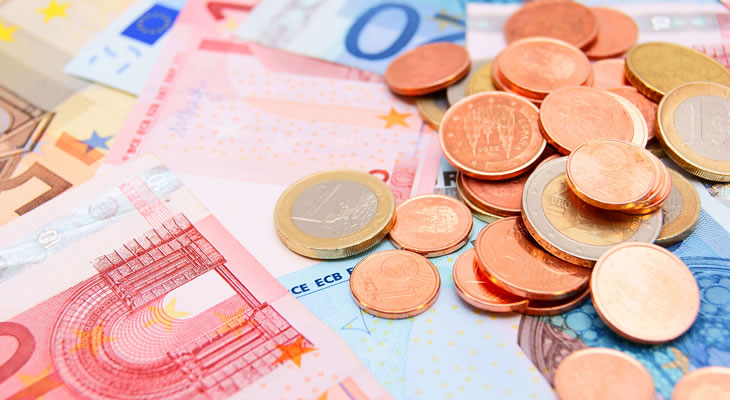- Pound hits prolonged slump on damaging data – Euro rises overall after varied Eurozone GDP stats
- BoE under fire to handle ‘Brexit’ fallout – Forecasts dim for future UK economic growth
- Euro appreciation reliant on Eurozone stability – Growth forecasts of high importance
- ECB to draw first with next policy decision – BoE could cut UK interest rate further in September
The Pound has assuredly been in the doldrums this week, with worsening news from the UK weakening the GBP EUR exchange rate at every turn.
The Euro has been in relatively high demand by contrast, with optimism ultimately winning out despite the most recent mixed bag of Eurozone economic announcements.
GBP Crippled by Mass of Negative UK News; Euro Fluctuates after Mixed Fortunes for Eurozone
The past week for the Pound has been one to forget, given that Sterling was kept in an overall negative state over the course of five days.
Rail strikes were a significant component of the latest GBP misery, with Southern employees striking from Monday to Wednesday and Eurostar workers also getting in on the action towards the end of the week.
The UK’s domestic data has been simply disappointing, with the trade deficit widening in June, production results for the same month failing to live up to expectations and the annual construction output figure from before the Referendum showing a drop from -1.6% to -2.2%, just a hair away from the worse expected outcome of -2.3%.
The Euro was dealt a far more mixed hand, having been mainly pushed up by better-than-expected German industrial production, trade balance and GDP data.
News was not all positive, however, with Italy seeing falling inflation in July and no actual economic growth whatsoever on the quarter for Q2.
The support offered by Germany’s data ultimately won out, with the Euro Pound exchange rate advancing from 0.84 to a three-year high of 0.86.
BoE’s Ability to Manage UK Economy Critical for Future Positivity in GBP Exchange Rates
Looking to the future now, the Bank of England (BoE) is certain to play a starring role in influencing how the Pound fares during the remainder of 2016 and beyond.
In addition to slashing the UK interest rate at the beginning of August, the BoE also put in place a rigorous quantitative easing plan, which involves buying bonds and gilts from investors to stimulate the economy.
This initially ran into trouble, with the UK central bank failing to reach its target due to holdout investors waiting for a more considerable offer for their in-demand holdings.
Looking to the long-term viability of this policy tool, Financial Times economist Martin Sandbu stated;
‘If [holders] are worried about holding cash on deposit with banks, the BoE can offer them direct access to central bank reserves. The “failed” auction does not mean the BoE is in trouble; but that does not mean all is well. Pushing gilt yields low enough, below the BoE’s policy rate of 0.25%, could be seen as constituting “helicopter money” over time. Expanding access to central bank electronic money could threaten banks’.
Consistent Eurozone Growth Essential if ECB is to Implement Policy Tightening
While the characteristics of the Eurozone are quite distinct from the UK, the single currency bloc still faces similar problems in terms of low growth and eye-wateringly high debt.
If the European Central Bank (ECB) is to step in as the BoE has, it will need some clear indicators that policy tightening is actually going to help, rather than harm the Eurozone as a whole.
One prime example of the problems currently faced within the Eurozone has been Italy, which has long struggled with high debt among national banks and weak or flat economic growth.
In a forecast from earlier on in the year, the Organisation for Economic Co-operation and Development (OECD) has perhaps optimistically anticipated that Italy will hit GDP growth of 1% in 2016 and 1.4% in 2017. As part of its forecast, the organisation has predicted that;
‘The government has reiterated its commitment to fiscal consolidation, but at a gradual pace, and to the structural reform programme. To generate the fiscal space for a much needed increase in public investment and avert the hike in indirect taxes programmed for 2017, it plans to use EU budget flexibility rules and to contain public spending. ECB monetary policy support and gradual fiscal consolidation have stabilised the debt-to-GDP ratio, which should start decreasing in 2017’.
However, with no Q2 economic growth in the second quarter, the OECD forecast is looking increasingly optimistic. The prospect of a slowing economy could weigh on the Euro going forwards due to the dragging effect of weakness in a member state on the entire currency bloc.
GBP EUR Exchange Rate Long Term Forecast – Will ECB and BoE Spring into Action in September?
The next big events to watch out for concerning the UK and the Eurozone will be central bank related, with the ECB expected to announce its interest rate decision and any bond-buying adjustments on September 8th; the BoE is expected to do the same on September 15th.
Making any kind of adjustment to central bank policy is not taken lightly, given how far-reaching the impacts of such a decision can be in both the near and long-term.
With that in mind, it is at least a possibility that the BoE will cut the UK interest rate again before the year is out, given that the idea of a second cut has been entertained by BoE officials Ben Broadbent, Ian McCafferty and even Governor Mark Carney himself.
Commenting on the likelihood, Broadbent stated;
‘The [BoE] minutes said there was a majority that expected to cut interest rates again were the economy to unfold in line with forecasts, and yes, I was one of the majority’.
As previous results have shown, the BoE does not actually have to cut the interest rate in order to trigger a mass Sterling weakening; even if such action is voted against in September, a 4/5 split among Monetary Policy Committee (MPC) members will be taken as a strong indicator that the remaining three rate decisions could still bring another record-breaking low UK interest rate.
For the ECB, the decision to shift the current interest rate from 0% is an even trickier one, given that this rate will have to accommodate both economically stable and unstable members of the large single currency bloc.
As it stands on TradingEconomics’s outlook, the current flat rate is something to get used to, given that the company only sees rates rising to 0.5% by the year 2020.
Due to this multi-year factoring in, an unchanged 0% rate is unlikely to garner much attention from investors at present.
As a result, while both the Pound and the Euro are facing headwinds in the coming months, it is possible that post-Brexit data will continue to keep GBP EUR exchange rates bearish.
Recent GBP EUR Exchange Rates
At the time of writing, the Pound Euro (GBP EUR) exchange rate was trending in the region of 1.1620 while the Euro Pound (EUR GBP) exchange rate was trending in the region of 0.8606.




Comments are closed.